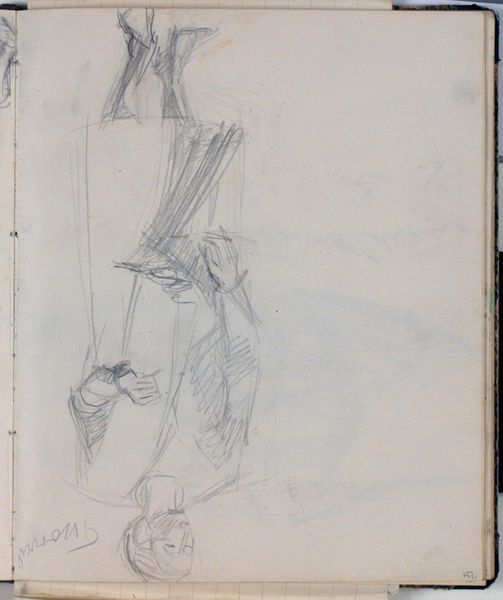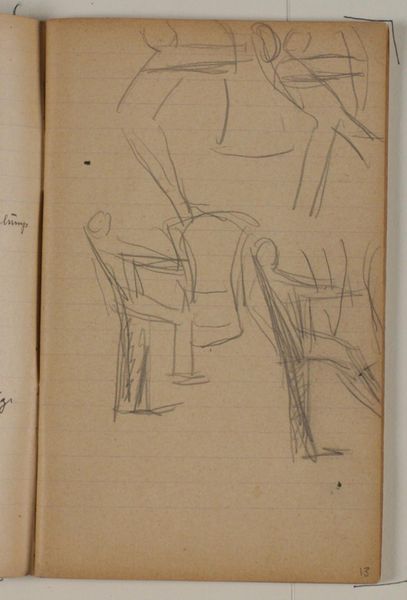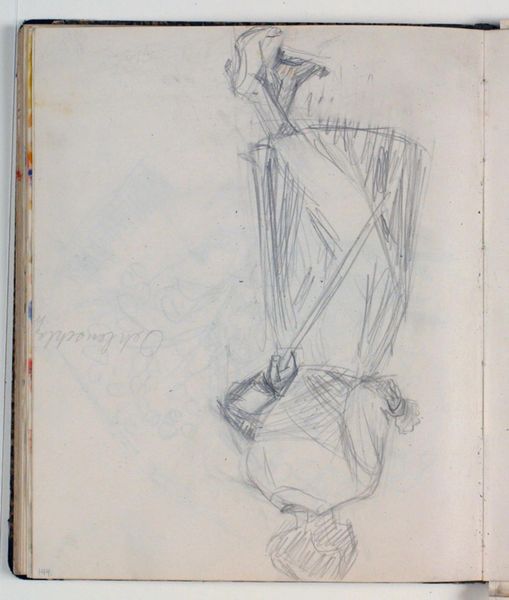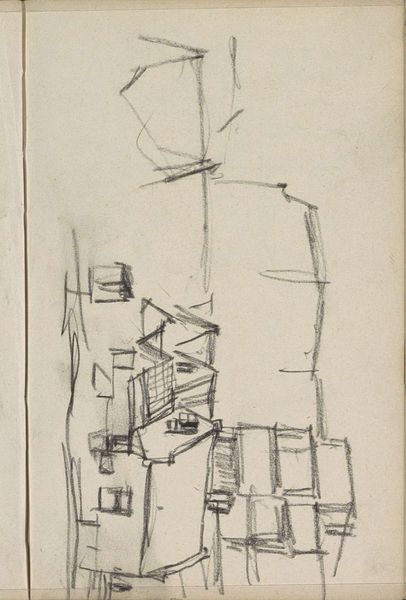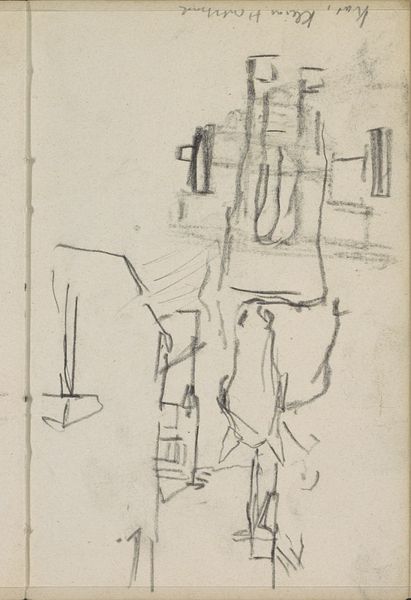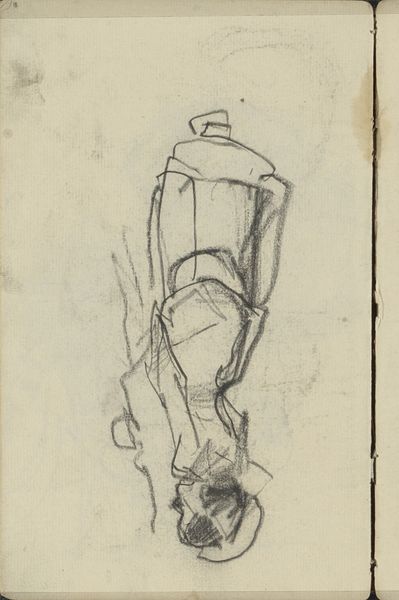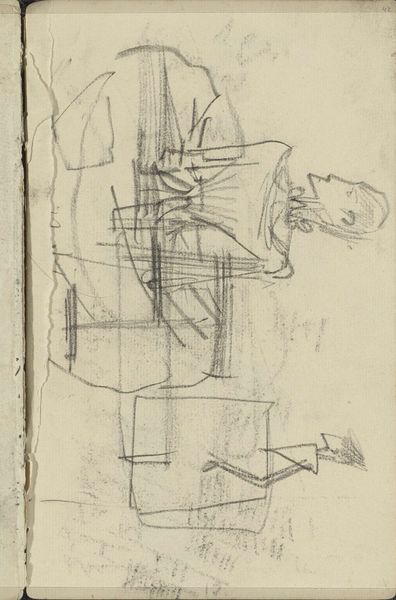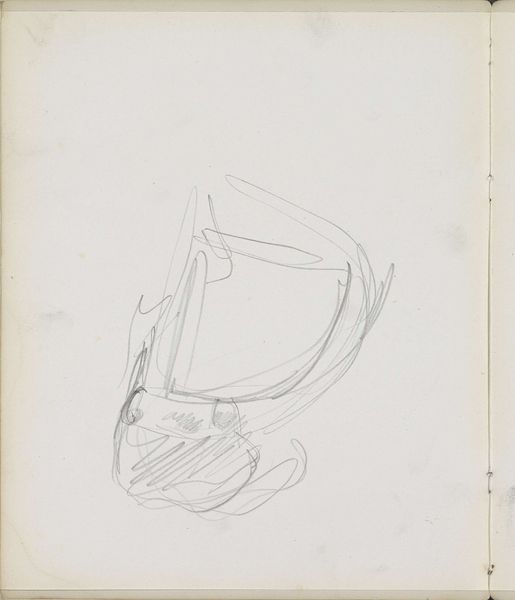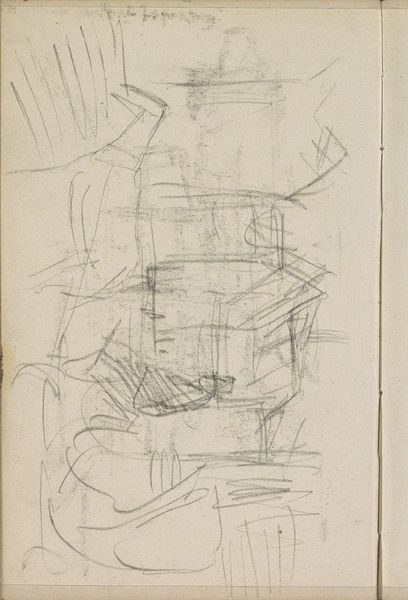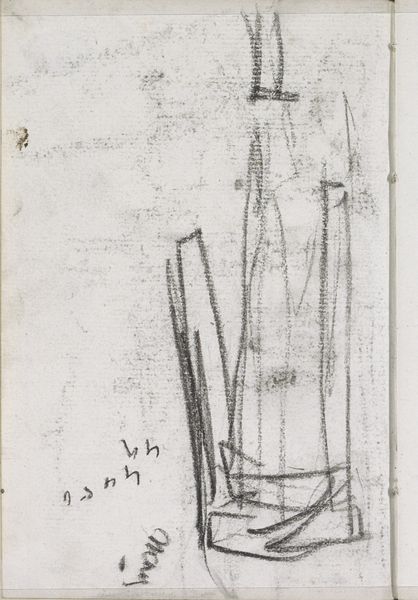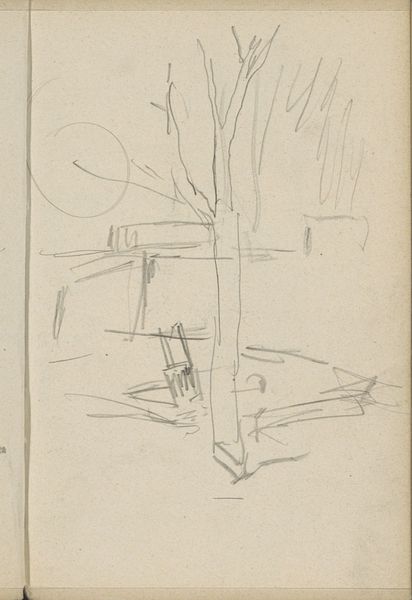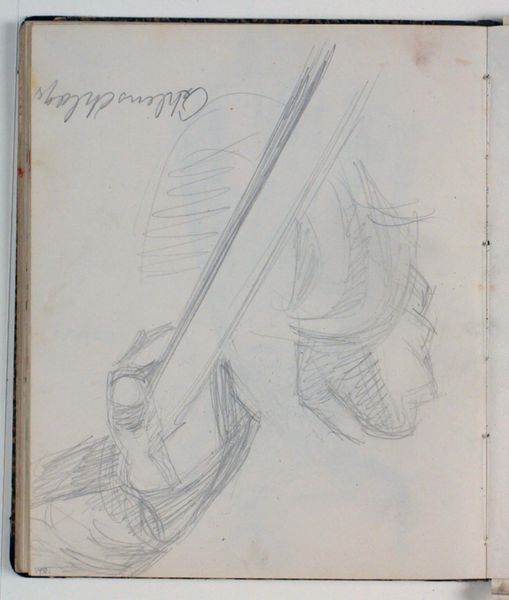
drawing, paper, pencil
#
portrait
#
drawing
#
paper
#
coloured pencil
#
pencil
Dimensions: 226 mm (height) x 185 mm (width) x 112 mm (depth) (monteringsmaal), 221 mm (height) x 184 mm (width) (bladmaal)
Curator: Here we have Niels Larsen Stevns' drawing, a preparatory sketch created between 1930 and 1936, titled "Thorvaldsen. Skitse til 'Engen ved Nysø'." It's pencil and colored pencil on paper. What are your first thoughts? Editor: The immediate feeling is tentative, raw, and ephemeral. There's a beautiful simplicity in these preliminary lines, capturing a fleeting idea before it takes solid form. It also makes me feel uneasy due to its current state, being presented upside down like this. Curator: The positioning could reflect Stevns' process of freehand sketching as he worked out compositions. As a portrait, it immediately provokes interesting questions about its representation. This work also begs us to ask broader questions: How did the art market shape Stevns’ choice of subject matter, and the later interpretations of his pieces? Editor: That’s a sharp angle of approach. Thinking about that within the intersectional discourse of the gaze – what is Stevns attempting to capture through this quick sketch of a figure? We might ask to what extent this artistic process itself imposes and possibly reflects gendered power dynamics. What social status might a portrait represent? Curator: Absolutely. Furthermore, it is a glimpse into the history of display and collecting – this sketch finds a home at the Statens Museum for Kunst. It’s intriguing how the act of preservation elevates it, transforming a casual study into a cultural artifact, thus imbuing it with public value. The act of preservation can act as commentary in itself. Editor: Exactly. By preserving this specific sketch, are we perhaps reinforcing the patriarchal canon it emerged from? Museums and galleries play a huge role in that reinforcement, though not always consciously or deliberately. We need to question how historical and political forces intertwine here, in this unassuming drawing, if not for future audiences who engage in a radical understanding of it. Curator: Indeed. Examining these early sketches lets us consider art institutions' responsibility in constructing narratives and hierarchies of value in the art world. How pieces like this are presented, and the discourse they provoke is powerful. Editor: These works allow us to really appreciate the nuances and potential contradictions inherent in that institutional role. Curator: And question those values along the way. Thank you. Editor: Thank you, too. It gives an even greater sense of direction when tackling similar work later.
Comments
No comments
Be the first to comment and join the conversation on the ultimate creative platform.
